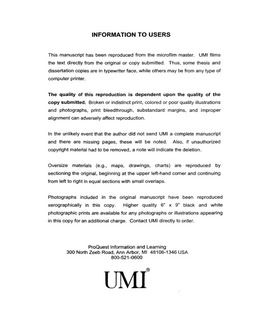| dc.contributor.advisor | Reardon, Richard, | en_US |
| dc.contributor.author | Savage, Cathryn Lea. | en_US |
| dc.date.accessioned | 2013-08-16T12:18:15Z | |
| dc.date.available | 2013-08-16T12:18:15Z | |
| dc.date.issued | 2001 | en_US |
| dc.identifier.uri | https://hdl.handle.net/11244/316 | |
| dc.description.abstract | This study examined the effects of issue importance on social identity, personal identification with an issue and contribution decisions in a public goods social dilemma. A total of 331 undergraduate students from the University of Oklahoma were recruited from the introductory psychology course to participate as one alternative for fulfilling course requirements. Potential participants were identified as high or low in the extent to which they could personally identify with a list of social issues measured during a pre-testing session. The specific issue was chosen based on approximately equal numbers of high and low levels of importance responses within the population. Participants were then randomly assigned to one of two group sizes and to either actual or fictitious groups. Actual groups of 4 and 8 discussed the issue and fictitious groups engaged in a thought listing procedure regarding the issue. Social identity, personal identification with the issue, contribution decisions and self-efficacy were measured in a 2 (important/unimportant issue) x 2 (group size = 4 or 8) x 2 (actual/fictitious, groups) design. Results showed that neither the salience of social identity nor personal identification with the issue prevented group size effects in terms of cooperative contribution decisions made before and after feedback during the public goods dilemma game. The greatest proportions of cooperative contributions came from both actual and fictitious groups of 4 with the issue viewed as important by group members. Actual groups in general had significantly higher levels of social identity than fictitious groups even when the issue was not considered important. In contrast, fictitious groups had significantly higher levels of both personal identification with the issue and self-efficacy. Group size effects were not present, however, when donation decisions were made to give the lottery winnings to the cause surrounding the issue. The highest percentages of donation decisions were from important issue conditions in both actual and fictitious groups. However, the greatest proportions of donations came from fictitious groups where both personal identification with the issue and self-efficacy were highest. | en_US |
| dc.format.extent | vii, 63 leaves : | en_US |
| dc.subject | Public goods. | en_US |
| dc.subject | Identity (Psychology) | en_US |
| dc.subject | Psychology, Personality. | en_US |
| dc.subject | Psychology, Social. | en_US |
| dc.subject | Psychology, Experimental. | en_US |
| dc.subject | Group identity. | en_US |
| dc.title | The effects of issue importance and group size differences on contribution rates and social identity in a public goods social dilemma. | en_US |
| dc.type | Thesis | en_US |
| dc.thesis.degree | Ph.D. | en_US |
| dc.thesis.degreeDiscipline | Department of Psychology | en_US |
| dc.note | Source: Dissertation Abstracts International, Volume: 62-03, Section: B, page: 1647. | en_US |
| dc.note | Chair: Richard Reardon. | en_US |
| ou.identifier | (UMI)AAI3009539 | en_US |
| ou.group | College of Arts and Sciences::Department of Psychology | |
